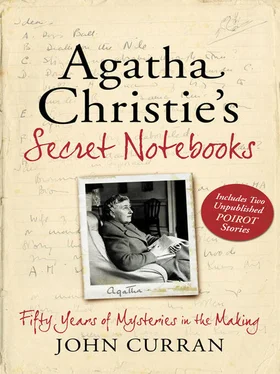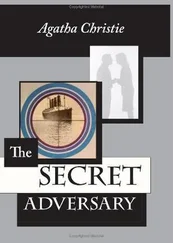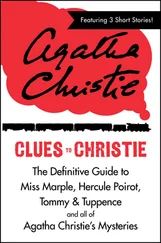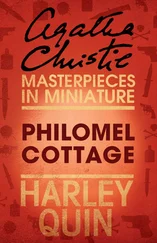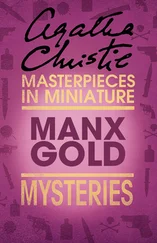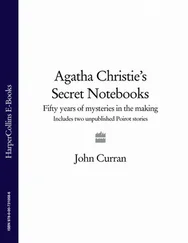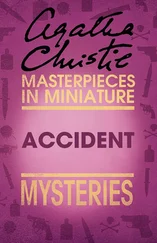[B] Real—invalid mother and daughter—dau[ghter] does it [Wetherby]
And, later in the same Notebook, she considers which of her characters could fit the profiles of one of the earlier crimes, the Kane murder case:
Could be
Robin’s mother (E. Kane)
Robin (EK’s son)
Mrs Crane (EK)
Their daughter (EK’s dau)
Mrs Carter (EK’s dau)
Young William Crane (EK’s son)
Mrs Wildfell (EK’s dau)
In Notebook 39 Christie rattles off six (despite the heading!) plot ideas, covering within these brief sketches kidnapping, forgery, robbery, fraud, murder and extortion:
4 snappy ideas for short Stories
Kidnapping? [The Adventure of] Johnnie Waverley again—Platinum blonde—kidnaps herself?
Invisible Will? Will written on quite different document
Museum robbery—celebrated professor takes things and examines them?—or member of public does
Stamps—Fortune hidden in them—gets dealer to buy them for him
An occurrence at a public place—Savoy? Dance?
Debutantes tea? Mothers killed off in rapid succession?
The Missing Pekingese
The ‘snappy’ suggests that these were jotted down while she waited for the kettle to boil—as, indeed, they probably were. The accurate dating of this extract is debatable. The reference ‘missing Pekingese’ is to ‘The Nemean Lion’, collected in The Labours of Hercules but first published in 1939. This, taken in conjunction with the reference to the ‘Debutantes tea’, probably indicates a late 1930s date when Christie’s daughter, Rosalind, would have been a debutante. Only two of the ideas appear in print (‘Invisible Will’ in ‘Motive Vs Opportunity’ in The Thirteen Problems and ‘Stamps’ in ‘Strange Jest’ and Spiders Web ), although not quite as they appear here.
In Notebook 47 Christie is in full flight planning a new short story, possibly a commission as she specifies the number of words. The following is all contained on one page and was probably written straight off:
Ideas for 7000 word story
A ‘Ruth Ellis’…idea?
Shoots man—not fatally—other man (or woman) eggs her on
Say this 2nd person was—
A. Sister in law? Brother’s wife—her son or child would get this money and not be sent to boarding school away from her influence—a gentle soft motherly creature
B. A mannish sister determined brother should not marry Ruby
C. Man (with influence over Ruby) works her up while pretending to calm her. X has some knowledge concerning him. He wants to marry X’s sister
D. Man formerly Ruby’s lover/husband—has it in for her and X
Unfortunately, she did not pursue this idea and no story resulted; she returned, four pages later, to plotting the play The Unexpected Guest, so the extract probably dates from the mid-1950s. (Ruth Ellis was the last woman to hang in the UK, in July 1955 after her conviction for the shooting of her lover David Blakely.)
Destinations Unknown
When she sat down to consider her next book, even before she got as far as plotting, Christie would rattle off possible settings. The next extract appears in Notebook 47 a few pages before notes for Four-Fifty from Paddington (and this list contains the germ of that book) and so would seem to date from the mid-1950s:
Book
Scene
Baghdad?
Hospital
Hotel [ At Bertram’s Hotel ]
Flat Third Floor Flat idea
Baghdad Chest idea [‘The Mystery of the Spanish Chest’ and The Rats ]
Small house in London husband and wife, children etc.
Park Regent’s Park
School Girl’s school [ Cat among the Pigeons ]
Boat Queen Emma? Western Lady
Train seen from a train? Through window of house or vice versa? [ Four-Fifty from Paddington ]
Beach And Boarding house [possibly Afternoon at the Seaside ]
Although difficult to date exactly, the following extract would seem to date from the very late 1940s. It is just after notes for Mrs McGinty’s Dead (although with a totally different plot outline) and They Do It with Mirrors (also with a completely different plot) and is followed by a list of her books in her own handwriting, the latest title of which is The Hollow (1946).
Ideas for Mise-en-scene?
Conditions like The White Crow. Start with the murder—a prominent person—such as a minister—
(Aneurin Bevan type?)—on holiday? Interrogation of his personnel—His wife—Female secretary
Male [secretary]—Difficulties as I don’t know about Ministers
Chief pharmacist in a Hospital? Young medical man doing research on Penicillin?
A brains trust? Local one? BBC Mrs AC arrives to broadcast—Dies—not the real Mrs AC?
A big hotel? Imperial? No—done Shop?
Worth’s during mannequin parade—Selfridges—in a cubicle during Sale
Some of the references in this extract may need clarification. The White Crow is a 1928 novel by Crime Club writer Philip MacDonald; it concerns the murder of an influential businessman in his own office (as in A Pocket Full of Rye ). Aneurin Bevan was UK Minister of Health, 1945-51. The position of chief pharmacist was one with which Christie would have been familiar both from her early life and from her experience in the Second World War ( The Pale Horse contains a gesture in this direction). ‘Imperial’ is a reference to Peril at End House, although the hotel is disguised as the Majestic. And Worth’s, like Selfridge’s, is a famous department store.
‘Mrs AC arrives to broadcast’ reminds us that although Christie refused countless requests throughout her career to broadcast on either radio or television, she did, at least once, take part in a Desert Island Discs type programme, In the Gramophone Library, broadcast in August 1946. And the rueful remark ‘Difficulties as I don’t know about Ministers’—my favourite comment from the entire Notebooks—shows that she abided by the old maxim—‘Write about what you know’.
Surprise, Surprise!
But the most unexpected element in the Notebooks was, to me, the fact that many of Christie’s best plots did not necessarily spring from a single devastating idea. She considered all possibilities when she plotted and did not confine herself to one idea, no matter how good it may have seemed. In very few cases is the identity of the murderer a given from the start of the plotting.
The most dramatic example is Crooked House (see also Chapter 4). With its startling revelation that the killer is a child, it remains one of the great Christie surprises, in the same class as The Murder of Roger Ackroyd, Murder on the Orient Express, Curtain and Endless Night. (To be entirely fair, at least two other writers, Ellery Queen in The Tragedy of Y and Margery Allingham in The White Cottage Mystery had already exploited this idea but far less effectively.) At that stage she had already used the narrator-murderer gambit, the police-man-murderer gambit, the everybody-did-it gambit, the every-body-as-victim gambit. Before reading the Notebooks, I had visualised Agatha Christie at her typewriter smiling craftily as she sat down in 1948 to write the next ‘Christie for Christmas’ and weaving a novel around the device of an 11-year-old girl as a cold-blooded murderer. Not so, however. Even a cursory glance at Notebook 14 shows that Christie considered Sophia, Clemency and Edith as well as Josephine when it came to potential murderers. It was not a case of arranging the entire plot around Josephine as the one unalterable fact. It was not the raison d’être of this novel; the shattering identity of the murderer was only one element under consideration and not necessarily the key element.
Читать дальше
Конец ознакомительного отрывка
Купить книгу
